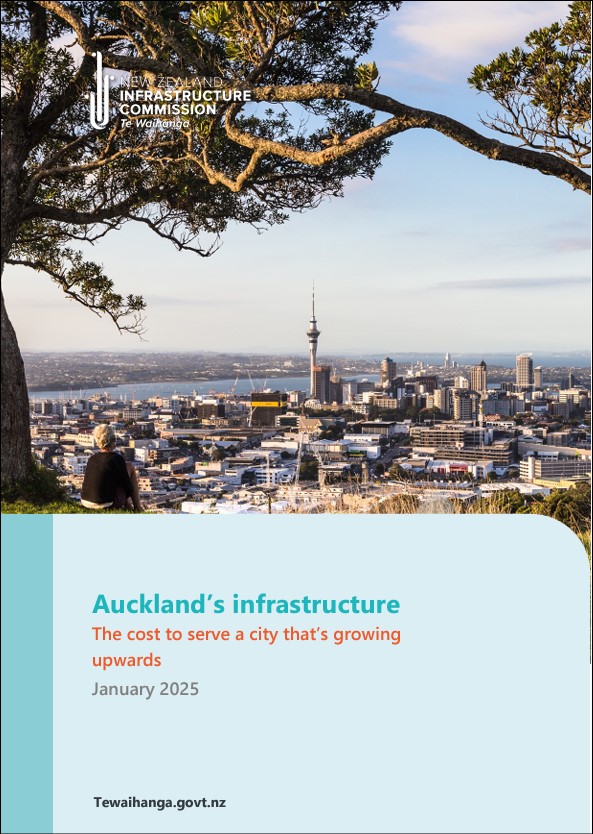Auckland’s infrastructure
Author:
New Zealand Infrastructure Commission Te Waihanga, Jane Godfrey, Nicholas Goodman, Brittany Farrant-Smith, Ezra Barson-McLeanSource:
New Zealand Infrastructure Commission, Te WaihangaPublication date:
2025Topics:
Environment ,People ,TransportExtract
Key insights
Auckland is New Zealand’s largest city and only city with a population over one million. In 2023, the Auckland region had a population of 1.66 million people, or 33% of New Zealand’s total population, and it contributed 38% of the country’s total economic output (GDP, or gross domestic product). However, the Auckland region only occupies 1.8% of the country’s total land area.
Auckland faces different infrastructure challenges than other parts of New Zealand, due to its size, density, and growth rate. City size and density affect how much infrastructure is needed in total, what it costs to service people with infrastructure, and what types of infrastructure are needed.
Based on our previous research, we identify three ways that Auckland is different to the rest of New Zealand when it comes to infrastructure.
Auckland is cheaper to service with network infrastructure – but new projects can be more expensive
Auckland benefits from economies of density in infrastructure network provision – because it has a large population of people who live relatively close together, it needs fewer roads, electricity distribution lines, and fibre broadband cables to connect them, and it is also more viable to provide public transport services. This reduces the amount of infrastructure that is needed per person, which in turn reduces ongoing maintenance and renewal costs.
However, the cost to build new infrastructure may be higher in Auckland, due to more complex mitigation requirements and higher land prices in built-up areas. For instance, road building is more expensive in Auckland than in the rest of the country. This can offset some of the benefits of density.
Aucklanders spend a smaller share of their income on infrastructure services
Auckland households’ infrastructure spending is different, reflecting differences in the amount of infrastructure services that people use as well as different costs to provide infrastructure services.
On average, Auckland households spend a smaller share of their after-tax income on infrastructure services than non-Auckland households, but because incomes are higher in Auckland they spend more in dollar terms. Auckland households’ mix of spending is also different, with a greater share of infrastructure budgets spent on public transport and slightly smaller shares spent on private vehicle transport and electricity and household fuels.
Aucklanders have slightly different views about the fairness of some options for pricing infrastructure
Aucklanders are more likely to think that it was fair to price piped water based on what it costs to supply to households or based on how much water households use, and more likely to think that it is fair to price roads based on how much people drive or based on whether they are travelling at peak times. These differences are likely to reflect the city’s longer experience with volumetric charging for water and increased exposure to congestion, which can be alleviated by time-of-use charging.
These differences mean that Aucklanders may be more accepting of using demand management to avoid the need for costly infrastructure upgrades.
January 2025
